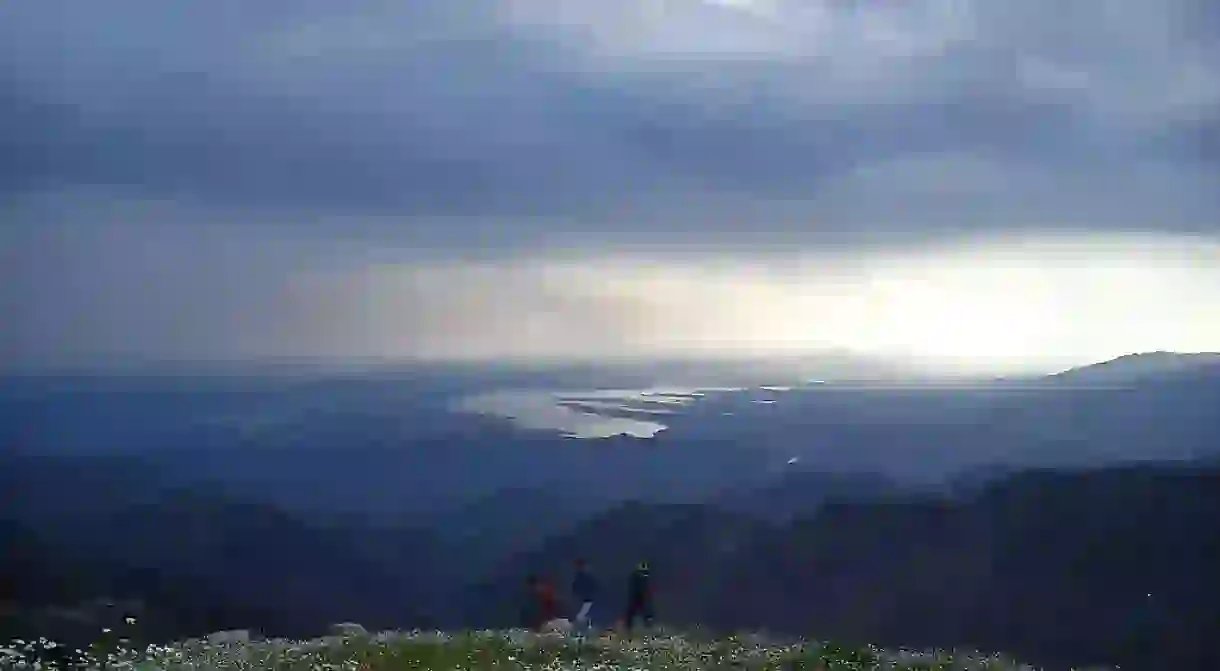Discover Dalhousie, The Serene Hill Station

Nestled in the snow-capped ranges of the Dhauladhar Mountains of the Himalayas 1,970 meters above sea level is the hill station of Dalhousie. It is built in and around the five hills of Kathalagh, Potreyn, Terah, Bakrota and Bhangora. Dalhousie offers the exact old-world charm and lingering taste of the bygone colonial era that you’d expect from a hill station that served as the summer retreat for the Britishers.
From the 1920s to 1940s, the hill station was the go-to destination for hordes of tourists from Lahore. Since then, the popularity of this mystical hill has suffered in comparison to the yesteryears. But it still stands strong with the hill station, contributing 13 percent of the state’s GDP. With charming architecture, beautiful churches, rustic monasteries and shady lanes of pines, deodars, and oaks, Dalhousie has so much to offer.

A walk through the stone-made houses running in and out of tree-shaded lanes will give you an idea of how slow life can be, especially if you live a hyperactive city life. The best place to view the snow-capped hills is from the Garam Sadak. It is called so as it gets most sunlight during the summers. The city has many churches that are worth visiting. The prominent ones that deserve a place on your itinerary are St. Andrew’s Church, St. Francis’ Church, St. John’s Church and the largest church of the town, St. Patrick’s Church. In the backdrop of the churches, you will see a lovely blend of Hindu and Tibetan culture. The Tibetan food influence is prominent, and you can try local delicacies like Thenthuk and Gyurma, apart from the momos. For shopping, your best bet is Sadar Bazaar and Tibetan Market. Bargain and you can find items for keeps.
After a heavy dose of culture, food and shopping, you can head to the hills for some reflection. The best place to do this is Ganji Pahari in Barkota Hills. A five-kilometer uphill walk from Dalhousie, it is the penance for the scrumptious food you just devoured. But when you reach the top, it’ll all seem worth it. The air is intoxicating, and you will feel the freshness of the breeze sending you in a reverie.
Just 3.5 kilometers from Gandhi Chowk in the main city are the healing waters of the Panchpula Waterfalls. The Sahasrdhara Springs located there is said to have medicinal properties that help in healing skin ailments. It is said this water helped cure Subhash Chandra Bose. We don’t know if that’s a fact, but the water is refreshing and clean and makes for an amazing picnic location.
Some 24 odd kilometers away is Khajjiar, the ‘Mini Switzerland of India.’ You’ll realize why when you reach the place. In the center of the valley is a lake. There’s also an ancient 12th-century temple dedicated to the local deity Khajji Nag. The valley is a vast green expanse that offers many adventure sports. So in case you are an adrenaline junkie, this is your spot.

The valley also has the famous Kalatop Khajjiar Wildlife Sanctuary. It is spread over an area of 39.06 square kilometers. The vast expanse of pines, oaks and deodars house wild pheasants, Himalayan black bears, Himalayan black martens, and the rare ghorals. If you want to spend the night here, there’s a government rest house (Kala Tope Rest House) hidden in between thick pine trees. We suggest you make bookings well in advance.
Another must-see point is the Dainkund Peak, the highest point. Located at 2,745 meters above sea level, it is called the Singing Hill. It offers the best view in the area, but you’ll need a special permit from the Indian Air Force to access the area.
Dalhousie offers you the serene view of the hills, plenty of fresh air and a place to sit and reflect.













